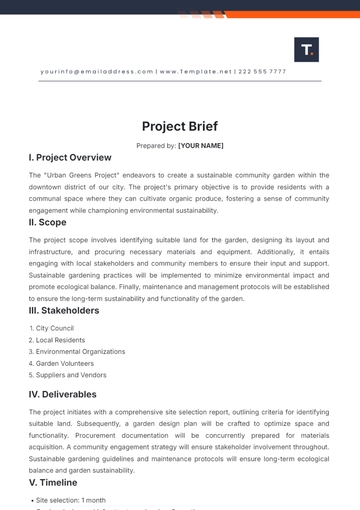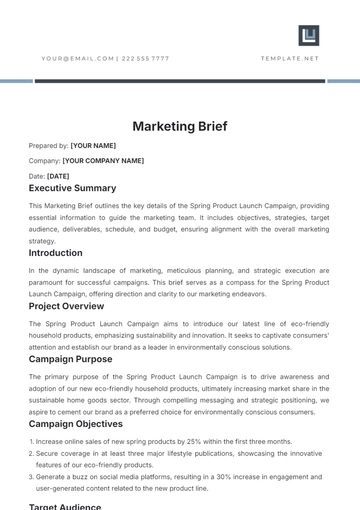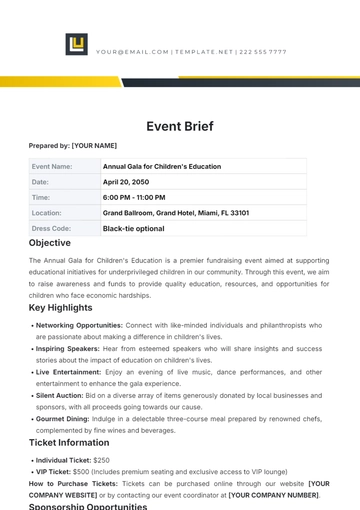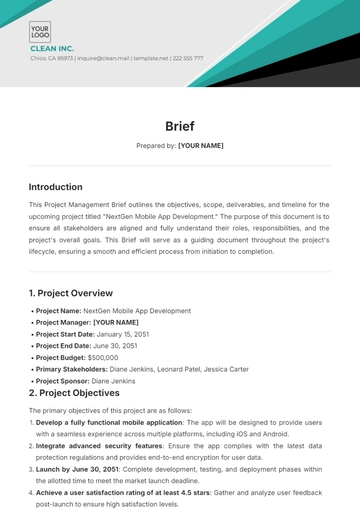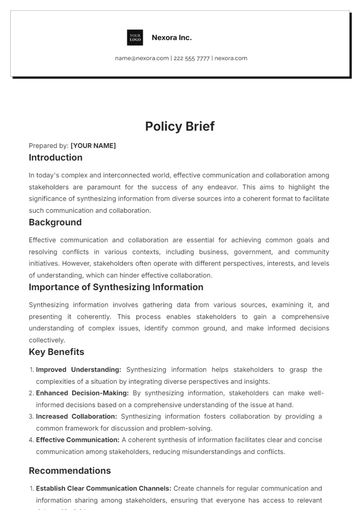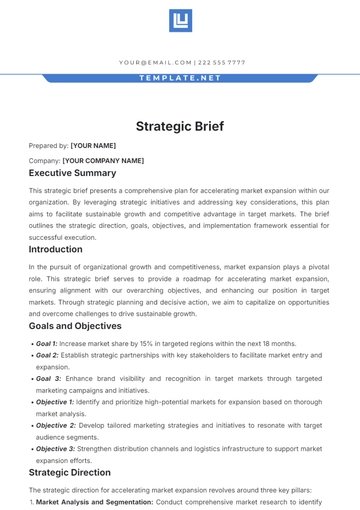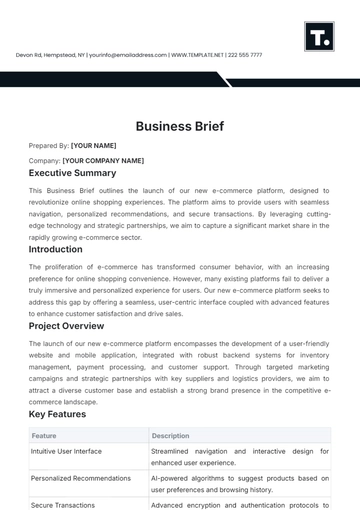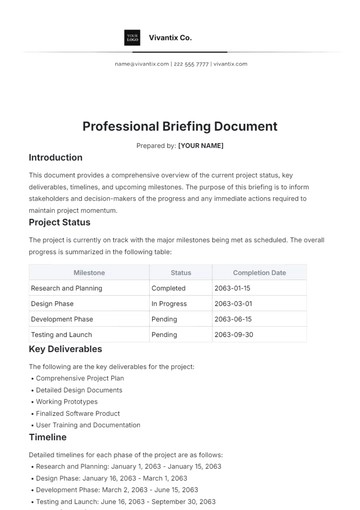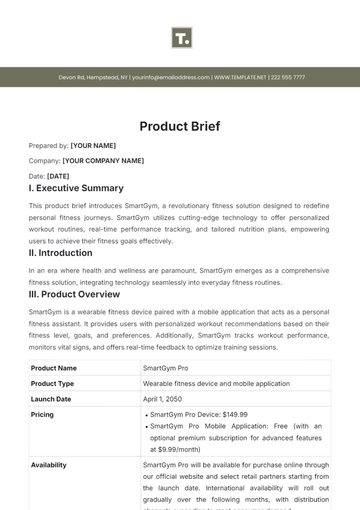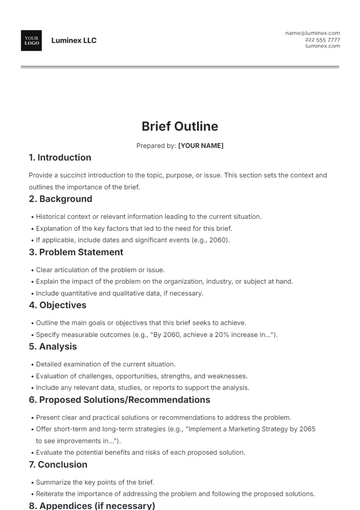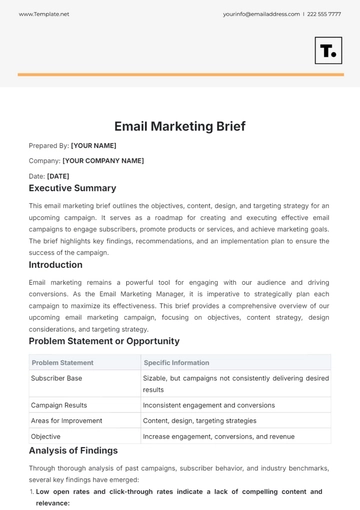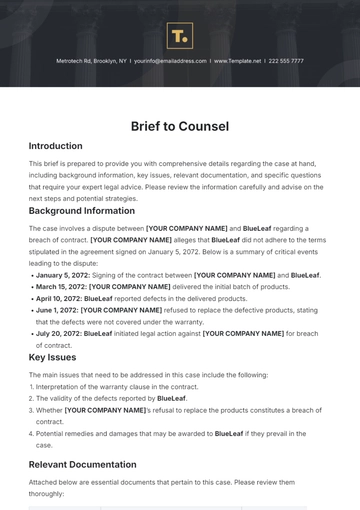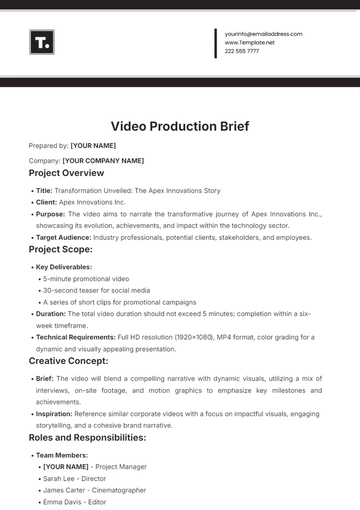Free Case Brief

I. Case Overview
Case Name: Smith v. Green Enterprises
Court: Superior Court of New York
Case Number: 2024-CV-4567
Date Filed: January 15, 2060
Date Decided: August 22, 2060
II. Parties Involved
Plaintiff
Name: Jonathan Smith
Address: 123 Elm Street, New York, NY 10001
Represented By: [Your Company Name]
Address: [Your Company Address]
Email: [Your Company Email]
Number: [Your Company Number]
Attorney: [Your Name]
Email: [Your Email]
Defendant
Name: Green Enterprises
Address: 456 Oak Avenue, New York, NY 10002
Represented By: Green & Associates
Address: 321 Maple Drive, New York, NY 10004
Email: info@greenassociateslaw.com
Number: (212) 555-1234
Attorney: Michael Clark
Email: mclark@greenassociateslaw.com
III. Facts of the Case
Background: Jonathan Smith, the plaintiff, alleges that Green Enterprises, the defendant, breached a contract dated July 1, 2058. The contract was for the supply of specialized software that Smith’s company required for an important project.
Key Events:
July 1, 2058: Contract signed between Smith and Green Enterprises.
December 15, 2058: Smith received a defective version of the software.
February 20, 2059: Smith informed Green Enterprises of the defect and asked for a replacement.
April 1, 2059: Green Enterprises failed to deliver a replacement or a refund.
January 15, 2060: Smith filed a lawsuit seeking damages for breach of contract.
IV. Legal Issues
Breach of Contract: Did Green Enterprises fail to meet the terms stipulated in the contract?
Damages: What amount is Jonathan Smith entitled to recover due to the breach?
V. Court's Decision
Ruling: The court found in favor of Jonathan Smith. The court held that Green Enterprises did indeed breach the contract by failing to deliver a non-defective product or provide a refund.
Damages Awarded:
Compensatory Damages: $250,000
Punitive Damages: $50,000
Total Award: $300,000
VI. Analysis
Contractual Obligations
The court highlighted that Green Enterprises had a clear obligation to provide a defect-free product and that failure to do so constituted a breach of contract.
Damages Calculation
The damages were calculated based on the loss incurred by Smith due to the breach, including both direct and consequential losses.
Implications for Future Cases
This case underscores the importance of adhering to contractual terms and the potential financial repercussions of failing to do so.
VII. Conclusion
The ruling in Smith v. Green Enterprises serves as a critical reminder of the legal expectations regarding contractual performance and the remedies available for breach of contract. This case highlights the judiciary's commitment to upholding contractual agreements and ensuring that parties are compensated for breaches.
Prepared By:
Attorney: [Your Name]
Lawfirm: [Your Company Name]
Date: September 2, 2060
- 100% Customizable, free editor
- Access 1 Million+ Templates, photo’s & graphics
- Download or share as a template
- Click and replace photos, graphics, text, backgrounds
- Resize, crop, AI write & more
- Access advanced editor
Elevate your legal analysis with Template.net's Case Brief Template. Designed for law students and professionals, this editable template is fully customizable to fit any case study. Its intuitive structure is perfect for summarizing and analyzing judicial decisions, making it a breeze to edit in our AI Editor Tool. Transform your case briefs into persuasive legal tools today.


